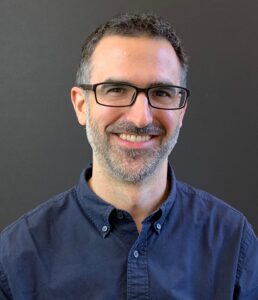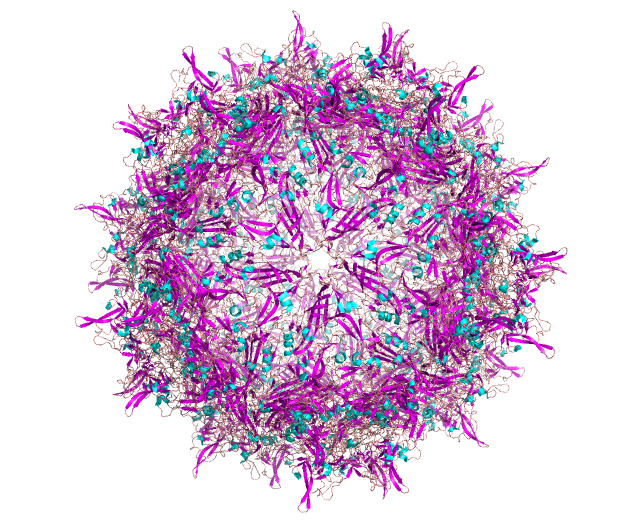
First coined in 1972, it has been more than 30 years since “gene therapy” was put into practice by visionary scientists and physicians (and the publisher of GEN Edge launched the first gene therapy journal!). They dreamt that for specific indications, mostly monogenic diseases, substituting the missing or mutated gene with the normal allele via gene addition could provide a long-lasting medical benefit for affected patients.
More recently, over the past five years or so, we’ve seen the first approved in vivo gene therapies such as Luxturna and Zolgensma, following decades of intense effort to develop safer viral vectors, primarily adeno-associated viruses (AAVs). These therapies treat diverse clinical indications, including neuromuscular disease and inherited blindness. Today, gene therapy is one of the most exciting areas in biotechnology and is at an inflection point. Recent successes in genetic medicine have laid the foundation for next-generation technologies and therapies that appear poised to unlock new areas of medicine.
Dyno Therapeutics—named after the high-risk, high reward mountaineering maneuver where an intrepid climber jumps or swings to the next hold, letting go of all contact points —is pioneering an artificial intelligence (AI)-powered approach to gene therapy. Using machine learning and quantitative high-throughput in vivo experimentation, Dyno Therapeutics is inventing new ways to design viral vectors.
To do so, the biotech company is focusing on cell-targeting capsid proteins from AAV, the most popular and widely used vector for gene therapies. The company’s CapsidMap™ platform rapidly discovers and systematically optimizes AAV capsids that significantly outperform current in vivo gene delivery approaches, thereby increasing the scope of diseases treatable with gene therapies. The company, which was founded in 2018 by George Church, PhD, Thomas Bjorklund, PhD, and Eric Kelsic, PhD, and is located in Cambridge, MA, announced a $100-million Series A financing round earlier this year to accelerate becoming the leading developer of in AAV gene therapy vectors.
GEN Edge sat down with Kelsic, the company’s CEO, to discuss how Dyno Therapeutics is rigorously employing diverse experimental and computational approaches to expand gene therapy’s capabilities and beyond.
GEN Edge: What are Dyno Therapeutics’ mission and vision?
Eric Kelsic: We are reshaping the gene therapy landscape with AI-powered AAV vectors. Our mission is to solve the in vivo gene delivery problem because this is how we open access to new gene therapies and maximize improving patient quality of life.
There is so much potential in gene therapy to solve unmet needs for patients. First, it’s an entirely new way of treating disease. Today, most medicines work by inhibiting a target. Instead of turning off a target, gene therapies instead add new functions. With this new functionality, there are many applications that go beyond just delivering a copy of a human gene. This means many creative possibilities for gene therapy. However, despite such great potential, it’s still a challenge to deliver these therapies today.
At Dyno, we’re 100% focused on solving this delivery challenge and are gaining momentum. We started in 2018 with seed financing, then last year we signed our first three partnerships with Novartis for eye capsids, Sarepta for muscle capsids, and Roche and Spark Therapeutics for the CNS and liver capsids. With our Series A financing for $100 million, led by a16z earlier this year, we’re now in a period of hyper-growth. We’re advancing on multiple scientific and business fronts to accelerate our current and future partners’ progress, and hard at work building an amazing company and a great place to work.
GEN Edge: What is Dyno Therapeutics’ strategy on partnerships?
Kelsic: We built Dyno to partner. Instead of developing our own products, we create world-class capsids, and our world-class partners are then responsible for continuing the journey through adding their own payloads, clinical development, and ultimately their own commercialization of these gene therapy products. This model works because gene therapies are modular. For example, a capsid vector that delivers the payload works just as well for many different payloads, basically it will deliver any DNA sequences you want, into targeted cells in the body. When we solve the delivery problem for a cell target once, we make it possible to treat the many conditions and diseases where those cells are impacted.
This partnering model scales well and enables us to have a broad impact. It’s impossible for any single company to fully address the unmet medical needs promised by gene therapy. By partnering we can increase the reach of our platform and enable the entire field to advance much faster. Simultaneously, our R&D teams can stay focused on continuously improving Dyno’s platform to enable treatments for new indications and to help all patient populations.
Ultimately, we hope to partner with everyone developing gene therapies, whether it’s industry leaders like our current partners, burgeoning startups, and even companies of the future that don’t exist today because it’s not currently possible to deliver to certain cell types and organs. Dyno deploys cutting-edge scientific and technical advances to solve the key challenge for the field, combined with partnerships enabling us to help the most patients as quickly as possible. This is how we maximize our positive impact on patients.
GEN Edge: How is Dyno Therapeutics organized to achieve the in vivo gene delivery problem?
Kelsic: Internally we are organized around a principle we call Collective Innovation: empowering a diverse team of the best problem solvers to drive cutting-edge science towards improving patient health. Consequently, our teams span scientific, engineering, business and healthcare disciplines, all working towards our common goals.
Our R&D teams are organized in three groups: Applied Biology, Data Science and Gene Therapy. The Gene Therapy group defines the strategy for each of our capsid engineering programs, including eye, muscle, brain, liver, and other organs. Applied Biology and Data Science are building Dyno’s platform, supporting our engineering programs and developing new technical capabilities.
We want a platform that robustly scales while supporting continuous innovation and improvement. To achieve these goals, we structure our most frequently used workflows into discrete units that modularly support the most pressing needs of the entire company. It’s similar to Object-Oriented Programming: for example, programming using Class objects makes it easier to smoothly improve function, and faster to create new programs since you easily recombine existing Classes rather than starting from scratch. Scientific breakthroughs can emerge from the most uncanny places. Our platform structure also makes it easier for anyone (regardless of hierarchy or discipline) to propose and implement a change, any of which could eventually lead to a scientific breakthrough.
Key to Collective Innovation is that we are working together to accomplish what no one person could do alone. That’s why we made teamwork a focus of our culture. I’ve always felt that the most important benefit from working at Dyno should be the experience of working together with great people. There’s still much to do, but the good news is we’re growing quickly and have many positions open. (If you’re reading this and share these values I encourage you to check out our careers page and reach out to our recruiting team!)
GEN Edge: Hypothetically, if Dyno Therapeutics solves the in vivo gene therapy delivery problem, what’s next?
Kelsic: Solving in vivo gene delivery is a hugely difficult challenge, and solutions would be highly impactful. Natural capsids are far away from what is theoretically possible, so most likely we’ll see multiple generations of delivery vectors that gradually enable us to realize the full potential of gene therapy.
With all the experimental data we’re collecting and our machine-guided approach to data analysis and sequence design, of course we’re excited about what we can do in other areas. But we want to solve this problem first. In the future, I imagine we will continue to focus on collective innovation and aim to treat more indications and patients while lowering costs and making gene therapy affordable and accessible for the entire world. Ultimately, once we find ways to use genetic tools to nudge cells into a healthier state, there’s a future in which every person could receive one or multiple gene therapies in their lifetime.
GEN Edge: Assuming you’re able to attain all the necessary resources, what does Dyno Therapeutics’ plotted trajectory look like?
Kelsic: Our current partnerships are structured where we design capsids and our partners commercialize products using Dyno’s capsids. We’re fully focused on making better capsids, and our partners take it from there. We hope to work together with many additional great partners to enable more therapies to get to patients.
Near the end of next year, I hope we’re already delivering best-in-class capsids to our partners. In five years, I hope we solve the in vivo delivery problem to make gene therapies possible for the majority of clinically important cell targets. Once we do that, we’ll focus on continuing to advance the state of the art in delivery by making gene therapies more effective for all patients, more specifically targeted and therefore safer, and more affordable.
We’re focused on solving in vivo delivery as the timing was perfect with these new technologies just now coming online, and because there was this huge opportunity for patient benefit. I’m sure there are other problems where massive data and machine learning could make a difference, which we’re open to exploring in the long-term future. But our plan is to ensure we will fully solve this one first.



